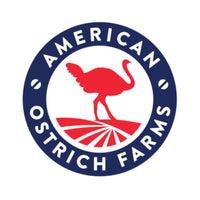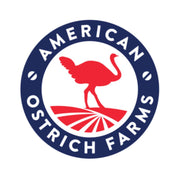If you're a pet owner, you know the joy of treating your furry friends to their favorite snacks. But keeping those treats fresh and organized can be a challenge, especially when you have a variety of raw and non-perishable options. Proper storage of pet treats ensures they stay fresh, safe, and tasty for your pets. Poor storage can lead to spoilage, loss of nutritional value, and even potential health hazards. Here’s how to keep your pet treats in optimal condition.
STORING NON-PERISHABLE PET TREATS
Non-perishable treats like biscuits, jerky, and dried chews are relatively easy to store. Here are some tips:
AIRTIGHT CONTAINERS
Airtight containers prevent moisture and pests from getting into the treats. Use glass or BPA-free plastic containers with tight-fitting lids. Label each container with the type of treat and expiration date to make keeping track of them that much easier.
COOL, DRY PLACE
Heat and humidity can cause treats to spoil faster. Store containers in a pantry or cupboard away from direct sunlight and heat sources. Avoid storing treats in areas like the kitchen counter where temperatures can fluctuate.
ORIGINAL PACKAGING
The original packaging often contains important information about the treats, including expiration dates and ingredients. If you prefer to transfer treats to a container, keep a portion of the original packaging with the treats or note down the details.
REGULAR CHECKS
Regularly checking treats ensures they are still good to give to your pet. Once a month, go through your treat stash and check for any signs of spoilage or past expiration dates.
STORING RAW PET TREATS
Raw pet treats, such as rawhide, bones, or rehydrated freeze-dried treats, require more careful storage to ensure they remain safe for your pet.
REFRIGERATION AND FREEZING
Raw treats can spoil quickly if not kept at the right temperature. Store raw treats in the refrigerator if they will be used within a few days. For longer storage, freeze the treats. Use airtight freezer bags or containers to prevent freezer burn.
SEPARATE COMPARTMENTS
Prevent cross-contamination with human food. Dedicate a specific shelf or drawer in your refrigerator or freezer for pet treats. Use labeled containers to avoid mix-ups.
PORTION CONTROL
Thawing and refreezing can compromise the quality of raw treats. Portion out treats before freezing. This way, you only thaw what you need, keeping the rest in optimal condition.
ORGANIZING PET TREATS
Now that your treats are stored correctly, keeping them organized ensures easy access and maintains order.
DESIGNATED TREAT AREA
Having a specific spot for treats keeps things tidy and makes it easy to find what you need. Choose a shelf, drawer, or a section of your pantry specifically for pet treats. Use bins or baskets to categorize different types of treats.
CLEAR LABELS
Clear labeling helps you quickly identify treats, especially if you have multiple pets with different dietary needs. Use a label maker or write directly on containers with a permanent marker. Include the treat type, pet’s name (if necessary), and expiration date.
TREAT ROTATION
Ensuring older treats are used first prevents waste. When restocking, place newer treats at the back and move older treats to the front. This simple practice ensures treats are used within their optimal freshness period.
BONUS TIPS
Travel-Friendly Storage: For on-the-go treat dispensing, invest in small, portable containers. Silicone snack bags or compact plastic containers work well for this purpose.
DIY Treat Jar: Personalize a treat jar for your pet. Use a mason jar and decorate it with your pet’s name and some cute designs. This can be a fun project and a charming addition to your kitchen decor.
Emergency Stock: Keep a small emergency stash of treats in your car or travel bag. This is handy for training sessions or unexpected situations where a treat might be needed.
Proper storage and organization of pet treats not only keeps them fresh and safe but also makes your life easier. With these tips, you can ensure your furry friend always gets the best quality treats, whether they’re enjoying a crunchy biscuit or a delicious raw snack. Happy treating!






